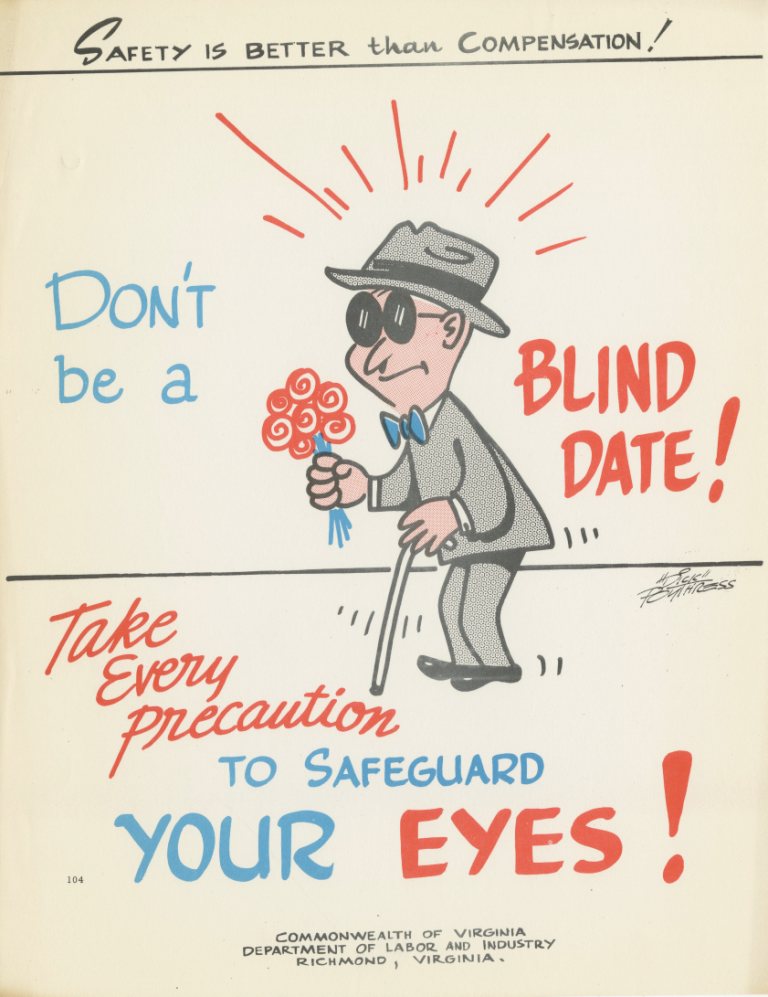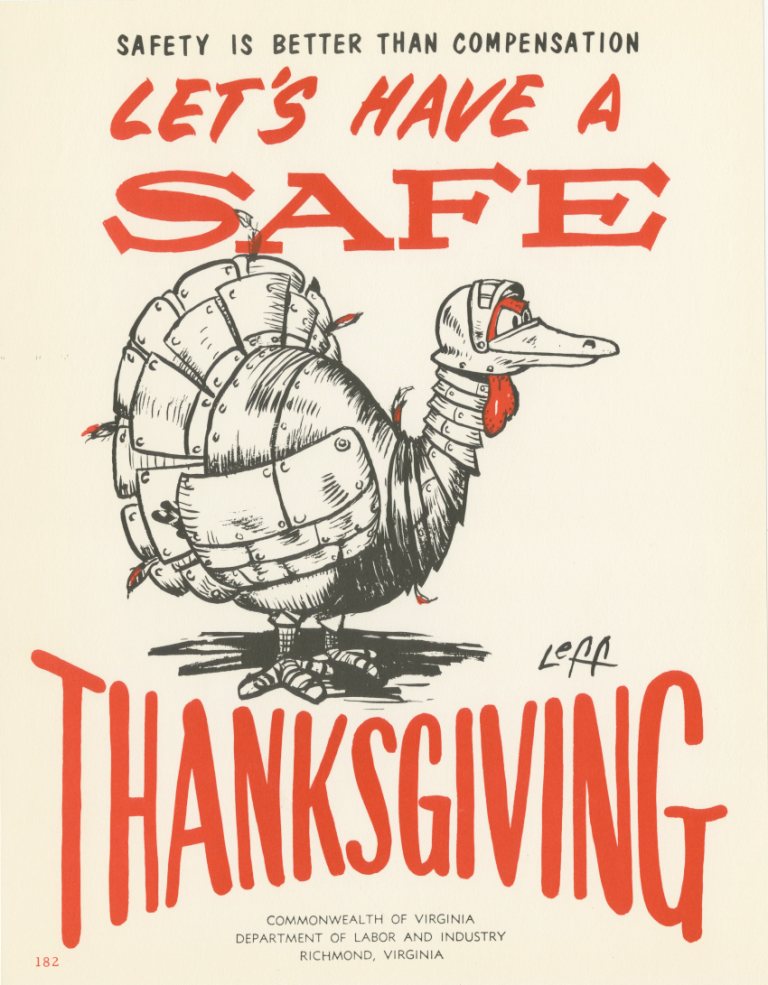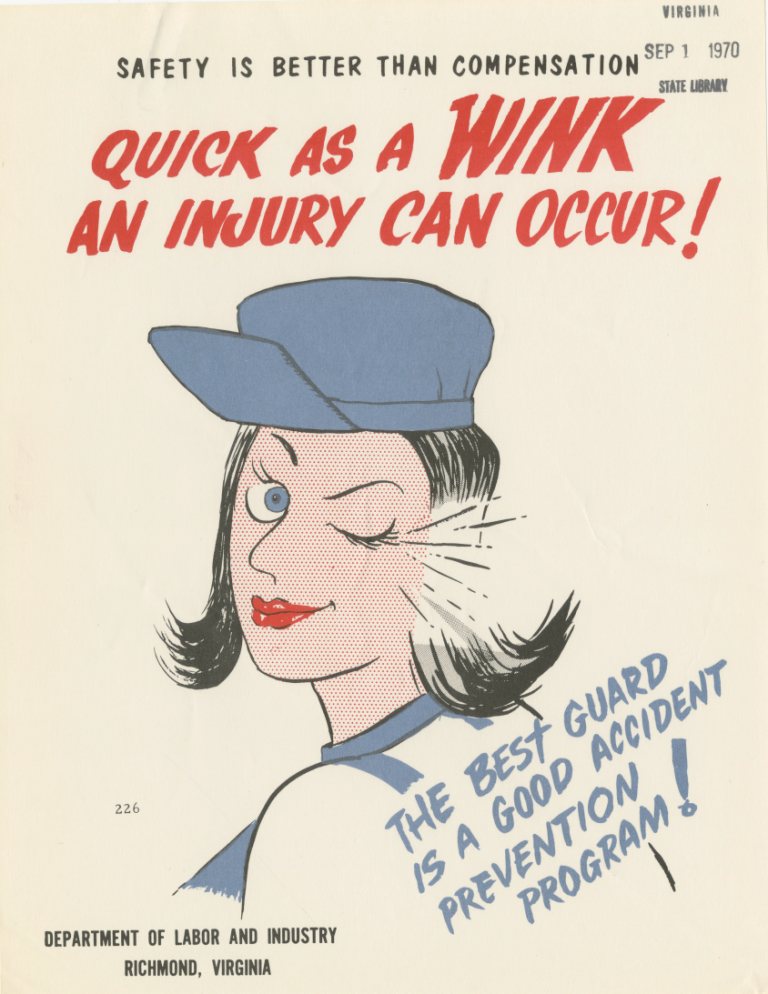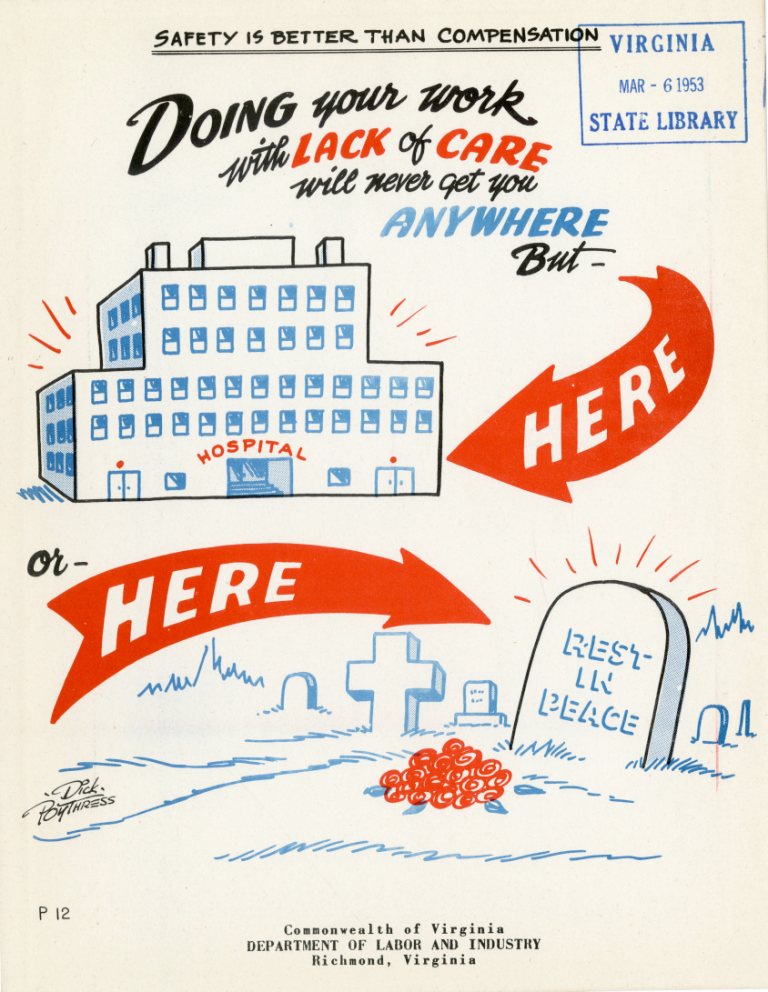Collection of Virginia Department of Labor and Industry Safety Posters
C1: 126
1953–1975
252 posters, 8.5 x 11 inches
“Safety is better than compensation.” This sentiment echoes—both explicitly and implicitly—through the world of these safety posters. Here cartoon workers are eaten by machines and lose limbs and eyes, all to the “music” of morbid puns and innocuous slogans (“You can’t be silly safely!”) reminiscent in style and sentiment to Heinrich Hoffmann’s 1844 children’s book, Struwwelpeter, in which violent punishments are merrily delivered to disobedient or imprudent children. The posters give a sense of a workplace ethos before the advent of political correctness. A notable softening of the posters’ visual style corresponds to a transition from artist Dick Poythress to Boyd Leffler of Salem, Virginia. As they progress through time they begin to suggest a subtle “holistic” interest in the lives of state employees. They conflate the professional and the personal, caution against overwork at home, emphasize the need for weekend rest and recreation, and even veer into sentimental and emotional territory quite out of character with the posters’ early comic approach.
Arrangement and access:
The posters are arranged chronologically.

C1:126 Collection of Virginia Department of Labor and Industry Safety Posters (LVA 10_1265_001) 
C1:126 Collection of Virginia Department of Labor and Industry Safety Posters (LVA 10_1265_001) 
C1:126 Collection of Virginia Department of Labor and Industry Safety Posters (LVA 10_1265_001) 
C1:126 Collection of
Collection of Virginia Department of Labor and Industry Safety Posters Read More »

